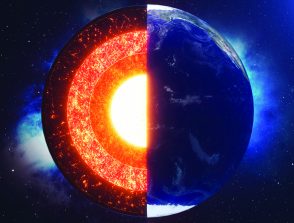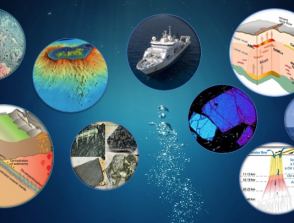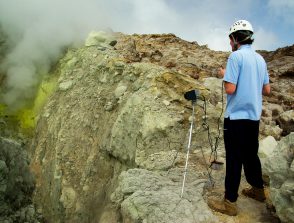Improving the Observability of Seafloor Deformation in Ocean Bottom Pressure Using Ocean Models: an A-0-A Experiment in the Context of the Mayotte Volcanic Crisis
30/03/2023
IPGP - Îlot Cuvier
11:00
Séminaires Géosciences Marines
Salle 310
Yann-Treden Tranchant
LIENSs La Rochelle
The use of ocean bottom pressure (OBP) records is crucial in monitoring seafloor motion caused by tectonic and magmatic processes, such as earthquakes and volcanic eruptions. However, accurately monitoring seafloor deformation through time with OBPs is challenging due to instrumental drift and oceanic variations at different timescales. In the context of the Mayotte volcanic crisis in the western Indian Ocean in 2018, three RBR Ambient-Zero-Ambient (A0A) drift-controlled pressure gauges were consecutively deployed in 2020, 2021, and 2022 to monitor seafloor vertical deformation. The A0A system estimates instrumental drift by periodically venting ocean pressures to a reference atmospheric pressure.
Since no significant vertical ground displacements have been recorded by ground GNSS stations since 2020, this study aimed to assess the calibration method of the pressure gauges, reduce oceanic “noise” in corrected OBP records, and discuss the ability to observe any seafloor deformation in the Mayotte region. Numerical models, including global ocean circulation reanalyses (OGCMs) and barotropic simulations, were used to understand the influence of different processes evolving at different timescales and to reduce the oceanic “noise” in drift-corrected OBP records, and thereby quantify the detectability of seafloor motion in the Mayotte region. Additionally, temperature and salinity data collected by repetitive glider transects were used to validate OGCMs in the region and quantify the contribution of unresolved fine-scale processes to OBP records.
This study provides insights into the feasibility of using numerical modeling for improving the accuracy of OBP-based monitoring in the context of the Mayotte seismic crisis as well as for other seafloor deformation monitoring. It also has important implications for future A0A deployments and in the perspective of the planned MARMOR seafloor cabled observatory.







